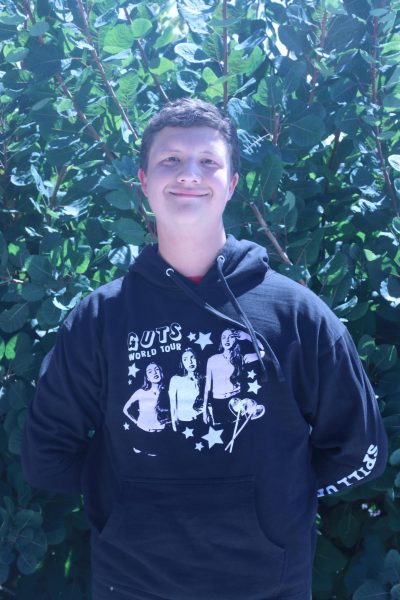Scrolling through Instagram, one can see numerous promotions for fundraisers. Whether it is through Chipotle, Smoothie King, or some other company/organization, it seems like everyone is scrounging around for money.
Of course, everything costs money; that is just the way the world works. But it can seem like some activities have to fundraise more than others. It can quickly lead to the idea that De Soto High School and the USD 232 district are possibly biased toward some programs.
For senior Stella Showalter, while it is understood schools do not make the most money, there have been some recent positive events.
“I think that it is fair to say that schools, in general, do not make enough money, but there are some things we’re really excited about. For example, band got new uniforms, [the school] got breakfast club back, those are all wonderful,” Showalter said. However, there have been some frustrations. “I think it can be frustrating at times when bigger sports or activities such as dance or football get a lot of money when more niche activities, like band and certain clubs, don’t get as much money.”
However, senior Ellery Wilson mentions the possible warped perspective that students may have about the district’s finances.
“I feel like students definitely have a warped perspective because we’re such a good school in Johnson County,” Wilson said. “We’re a 5A school, it’s not like we’re in super western Kansas where they may not have as much funding as our district does.”
Senior Sydney Moore also discusses the possible different perspectives students may have.
“For the students that aren’t involved in a lot of things, I just feel like they don’t care,” Moore said. “They’re just like ‘Whatever happens happens,’ and they’re able to get by without really caring about it and not worrying about it, even though it is something I worry about, because a lot of it is very unequal.”
Just a simple look at USD 232’s website and searching “Budget” allows you to view this year’s district budget, simplified.
At first glance, the row labeled “Activity Funds” on page 8 of the document “Budget-at-a-Glance” states that as of July 1st, 2024, there was $136,050 in the bank account for activities. However, things start to get complicated the more you look at each graph and chart, with more questions following. What exactly defines an activity? Does it mean clubs, or sports? What qualifies as “Transportation”? Does that mean regular morning and afternoon busing, or transportation for teams to other schools on meet days?
Because of the general vagueness and complexity, it can be really hard to wrap one’s head around how the district and each of its buildings are spending and earning money.
Principal Sam Ruff is able to clarify some things about the ways USD 232 receives funding.
“The school district [receives] funding from essentially three different ways. The state of Kansas gives school districts funding based on a per-pupil amount,” Ruff said. “It’s called ‘based aid,’ so there’s a certain amount for every student that the state of Kansas gives to school districts and that’s across the entire state.”
According to De Soto High School’s report card for the 2023-2024 year from the Kansas Department of Education, DHS enrolled 980 students. On the other side of the district at Mill Valley High School, they enrolled 1,388 students.
“Another way in which school districts get money is they get money from property taxes,” Ruff said. “A certain percentage of the money that landowners pay from property taxes gets put to the school. The higher value of the land the more money goes to the school.”
Based on the Department of Education’s National Center for Education Statistics, USD 232 has 12,142 households, with the median income being $139,719.In comparison, USD 229, better known as the Blue Valley School District, had an average household income of $133,266 for those years.
“The last funding source is school fees. Students who enroll in a class like Res. Carp., well they’re probably gonna cut some pieces of wood, so we have to pay for that wood,” Ruff said. “Consumables, things that are consumed by that class, [like for] Nutrition and Wellness, the food gets purchased, that comes from the school fees.”
So, those are the ways that the district earns money. But, how exactly is it spent?
“The district then turns around and gives the school, it’s still the district’s money, but they give the school a budget that we are able to spend money on,” Ruff said. “We pay for Minga out of that, we give each teacher $150 to spend on classroom supplies so Expo markers, things that they use during the year. It’s not very much money, $150 is not very much money, but we provide that.”
Going back to fundraising and taking a quick glance at DHS’ Theatre Instagram, one can see four fundraisers alone for this year’s Fall Musical, Mary Poppins. Of course, such a large production requires lots of fundraising that way the program can buy everything needed. However, few students ever hear of other programs doing fundraisers.
Showalter, who is a part of Band and Environmental Club as well, comments on the number of fundraisers some programs have to do.
“I do think it’s interesting to see the dynamic where you see the band kids kind of like, getting their parents to donate, getting all the friends and family and neighbors and teachers,” Showalter said. “I don’t think anyone else has had to fundraise like we do. If I were to pick one thing that’s underfunded it’s band. We fundraise like no one else’s business.”
Moore, who is in AVID and Band, talks about the number of fundraisers that others have to do.
“Seeing the results of fine arts teams like marching band, theatre [and] having to fundraise abnormal amounts to get props for the marching band show, [while] having to see us blatantly ask parents for money, doing a mattress sale fundraiser, Butter Braids bake sale. We have to do fundraising but we don’t ever see football, basketball ever having to fundraise,” Moore said. “We’re constantly asking for money and it’s just not fun to have to, cause money for some families can be a really tough conversation [while] for others it’s not.”
While it does appear that the district is biased towards some programs over others to students, Ruff reassures that the district tries to be unbiased with its finances.
“I’m on the capital outlay committee, which all of the schools ask for the district to pay for stuff that they need,” Ruff said. “It can be complicated. It’s hard to explain it in a way that doesn’t make somebody feel like they’re left out, I understand that, but we really try our best to try to be thoughtful about how we’re funding things.”
Because of how complicated the district budget is, it has led to many different perspectives about how USD 232 is spending its money. While some know that schools are not the most funded thing, there have been some frustrations about the way the budget is balanced and whether or not programs are getting enough money.



